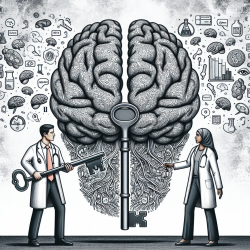Introduction
As the global population ages, the prevalence of Alzheimer's Disease (AD) continues to rise, posing significant challenges for healthcare systems worldwide. Recent research has highlighted the potential of circulating cell-free DNA (cfDNA) and DNA double-strand breaks (DSBs) as early biomarkers for AD, offering a promising avenue for early diagnosis and intervention. This blog explores these findings and their implications for practitioners in the field of speech-language pathology and beyond.
The Role of Cell-Free DNA
Cell-free DNA, which consists of nuclear and mitochondrial DNA fragments, is released into the bloodstream during cell death processes like apoptosis and necrosis. Elevated levels of cfDNA have been associated with various conditions, including cancer and neurodegenerative diseases. In the context of AD, cfDNA levels in blood and cerebrospinal fluid (CSF) can serve as early indicators of disease onset, providing a non-invasive diagnostic tool.
- cfDNA as a Biomarker: Studies have shown that increased cfDNA levels correlate with cognitive decline and physical frailty, making it a potential marker for identifying individuals at risk of AD.
- Liquid Biopsy: This technique involves analyzing cfDNA in body fluids, offering a less invasive alternative to traditional tissue biopsies and enabling early detection of AD-related changes.
DNA Double-Strand Breaks and Neurodegeneration
DNA double-strand breaks are a severe form of DNA damage that can lead to cell death if not properly repaired. In AD, the brain's ability to repair these breaks is compromised, contributing to neurodegeneration. DSBs can thus serve as prognostic markers for AD, highlighting the need for further research into their clinical application.
- DSBs as a Diagnostic Tool: Research indicates that DSBs accumulate in AD brains, suggesting their potential as biomarkers for early detection and monitoring of disease progression.
- Therapeutic Implications: Understanding the mechanisms behind DSB repair could lead to novel therapeutic strategies for AD, such as enhancing DNA repair pathways to promote neuronal survival.
Implications for Practitioners
For practitioners, particularly those in speech-language pathology, these findings underscore the importance of staying informed about emerging biomarkers and their potential applications. By integrating knowledge of cfDNA and DSBs into practice, professionals can contribute to early diagnosis and intervention strategies, ultimately improving outcomes for individuals with AD.
Conclusion
The exploration of cfDNA and DSBs as biomarkers for AD represents a significant advancement in our understanding of neurodegenerative diseases. While challenges remain in their clinical application, these biomarkers offer a promising path forward for early detection and intervention. Practitioners are encouraged to stay abreast of ongoing research and consider the implications of these findings in their work.
To read the original research paper, please follow this link: Circulating Cell Free DNA and DNA Double-Strand Breakage in Alzheimer’s Disease.










